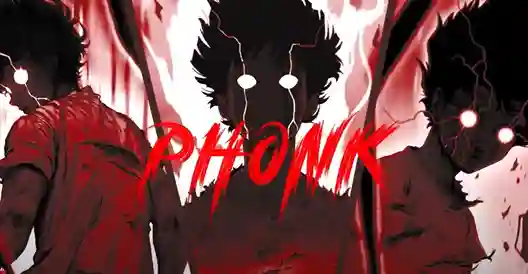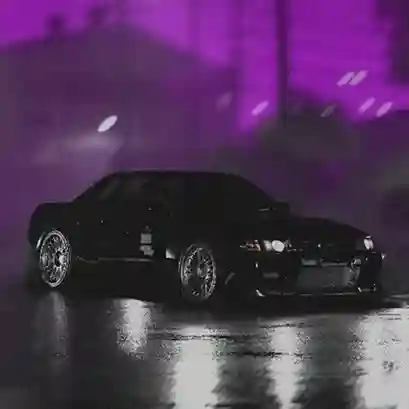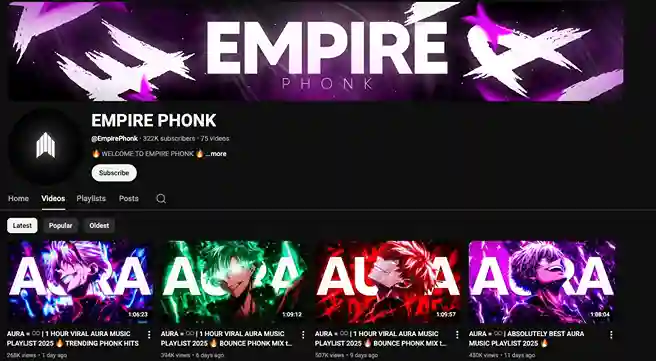Wikiphonk

Phonk is one of the most striking musical revolutions of the Internet generation.
Blending 1990s Memphis rap, funk, trap, and lo-fi aesthetics, it grew from an underground web movement into a global sound dominating social platforms like TikTok, Instagram Reels, and YouTube Shorts. Modern phonk — sometimes called drift phonk or Brazilian phonk — is defined by distorted 808 basslines, sharp cowbells, and a retro-futurist atmosphere inspired by car culture, neon lights, and VHS textures. Born entirely online, it embodies the DIY spirit of digital creativity: a genre made by Internet users, for Internet users.
Today, phonk has no borders. Artists from Russia 🇷🇺, Brazil 🇧🇷, Europe 🇪🇺, and Asia 🇮🇳🇯🇵🇹🇭🇨🇳🇰🇷 contribute to its evolution, turning it into a truly global movement. More than a genre, phonk represents a new creative language — fast, connected, and limitless.
📼 Origins & Evolution
Phonk traces its roots back to the Memphis underground rap scene of the 1990s. Producers like Three 6 Mafia, DJ Spanish Fly, Tommy Wright III, and DJ Screw created a raw, dark sound built on soul samples, 808 drum machines, and slowed-down vocals. The chopped & screwed technique — slowing tempo and slicing vocals — became a key influence, giving phonk its hypnotic, eerie texture.
The Internet Revival (2010–2015)
In the early 2010s, a new generation rediscovered this sound through YouTube, SoundCloud, and Bandcamp. Producers like DJ Smokey, Soudiere, and DJ Yung Vamp, alongside curators such as Ryan Celsius, modernized the style with trap drums and lo-fi filters. They combined vintage Memphis samples with grainy VHS visuals, shaping what fans call Phonk 2.0 — nostalgic, gritty, and deeply online.
The Global Rise (2016–2020)
Between 2016 and 2020, phonk evolved from homage to innovation. Local micro-scenes appeared in Europe 🇪🇺, Russia 🇷🇺, Brazil 🇧🇷, and Japan 🇯🇵, each adding its own flavor — from dark ambient vibes to clean, trap-influenced production. Phonk became more structured and melodic while keeping its underground essence.
The Viral Explosion (2021–2022)
A major turning point came with the rise of short-form videos. The drift phonk wave — fast, aggressive, and bass-heavy — became the soundtrack to car and drift edits. Tracks like Murder in My Mind (Kordhell) and Close Eyes (DVRST) reached hundreds of millions of plays, turning phonk into a global viral phenomenon. During this period, Brazilian phonk was laying groundwork in regional and online scenes, but its mainstream breakout would arrive later.
A Hybrid Era & Brazilian Breakout (2023–2025)
From 2023 onward, phonk matured into a hybrid sound:
- Eastern Europe 🇪🇺 doubled down on heavy, percussive drift phonk.
- Western Europe 🇪🇺 pushed fusions with techno, drum & bass, and ambient.
- Brazil 🇧🇷 moved from early seeds to a full mainstream surge in 2025, with artists like ATLXS (PASSO BEM SOLTO) and LONOWN (AVANGARD) spearheading the wider explosion, alongside club-leaning producers and editors who amplified the style across TikTok and YouTube.
Despite criticism of over-commercialization, phonk remains a defining sound of the 2020s — a symbol of Internet-born creativity and global connection.
🎚️ Musical Characteristics
Phonk’s identity lies in the fusion of nostalgia and power, combining the gritty textures of 1990s Memphis rap with the precision of modern digital production. Its rhythm is the heartbeat of the genre — a hypnotic drive that ranges from the slow, syrupy swing of DJ Screw’s chopped & screwed influence to the high-velocity pulse of modern drift phonk. Most contemporary tracks sit between 150 and 180 BPM, propelled by tight trap drums and the unmistakable metallic cowbell hits that define the genre’s groove. The result is an intense yet controlled energy, equally suited for night-time drives and viral Internet edits.
At the core of phonk lies its devotion to sampling and sound design. Producers dig through archives of old Memphis rap tapes, funk records, movie dialogues, or even forgotten commercials, reshaping them into something entirely new. These fragments are slowed down, filtered, and layered with distortion or saturation, creating a dense lo-fi texture that feels both vintage and futuristic. Tools like FL Studio and Ableton Live allow artists to experiment with compression, reverb, and sidechain techniques, sculpting a sound that is simultaneously raw and immersive.
Melodically, phonk thrives on simplicity and emotion. Most compositions are built on minor-key patterns that convey tension, melancholy, or nostalgia. Within that framework, each regional scene adds its own character: Brazilian phonk 🇧🇷 introduces brighter harmonies and a danceable swing inspired by funk carioca, while drift phonk leans toward mechanical repetition and cinematic impact. This contrast — between euphoria and darkness, vintage soul and digital aggression — gives phonk its distinctive emotional power.
Beyond sound, phonk is inherently visual. Its imagery — Japanese drift cars sliding through neon-lit streets, VHS static, glowing skylines, and masked figures — completes the experience. The visuals amplify what the music expresses: motion, speed, rebellion, and a touch of nostalgia for a time that never quite existed. To listen to phonk is to enter a world that is at once retro and digital, urban and dreamlike — a self-contained universe where sound and image merge into one.
🌀 Subgenres of Phonk
The phonk ecosystem is vast and ever-evolving:

Old-School Phonk:
Slow, lo-fi, and eerie; true to Memphis roots.

Drift Phonk:
Fast, distorted, and viral; the soundtrack of speed and street racing.

Brazilian Phonk:
Warm, rhythmic, and club-friendly; infused with funk carioca.

Trap / Rare Phonk:
Experimental or minimal offshoots that keep the underground DIY spirit alive.
Each artist brings a personal twist — and that individuality keeps the genre dynamic and unpredictable.
🌐 Internet Culture & Diffusion
Phonk is often described as the first truly Internet-native genre — a style born not from a single city or local scene, but from the vast, interconnected spaces of the web itself. Unlike hip-hop, which emerged in New York, or techno, which was shaped in Detroit, phonk has no geographical roots. Its entire identity was built and spread online, evolving through algorithms, communities, and user creativity rather than labels or radio play.
In its early days, phonk circulated mainly through YouTube and SoundCloud, where producers uploaded grainy mixes accompanied by VHS-style visuals. These videos, often featuring drifting cars or vintage anime loops, helped forge the genre’s visual language. But it was the arrival of TikTok and other short-form video platforms that truly catapulted phonk into global awareness. The genre’s energetic, loopable structure proved perfectly suited for clips, edits, and memes — millions of short videos began reusing the same tracks, turning underground producers into viral sensations almost overnight.

At its core, phonk thrives on collective participation. Anyone can remix, repost, or reinterpret a track, and success often comes not from marketing budgets but from the organic momentum of the community. This peer-to-peer model has redefined how music spreads in the digital era: songs rise to prominence through repetition, collaboration, and algorithmic discovery rather than traditional promotion.
The visual identity of phonk plays a crucial role in its diffusion. The imagery of JDM cars sliding through neon-lit streets, rain-soaked asphalt, VHS static, glitchy typography, and masked figures has become a universal language among fans. It blends the nostalgia of analog aesthetics with the pace and pulse of modern digital culture — a reflection of a generation that lives between two worlds, where retro and futuristic coexist seamlessly.
Equally important is the DIY spirit that defines the movement. Most phonk producers work from their bedrooms with minimal gear, crafting beats on laptops using FL Studio or Ableton Live. They exchange sound packs, share presets, and collaborate across continents through Discord servers or Reddit threads. This open-source creativity keeps the scene fresh and decentralized — a musical democracy powered by passion, where innovation is constant and the barriers to entry are nearly nonexistent.
🔮 Influence & Legacy
Phonk has evolved beyond music into a full-fledged cultural movement. Its influence now touches electronic music, streetwear, graphic design, and car culture. DJs blend phonk into techno and trap sets; clothing brands adopt its glitchy, vaporwave-inspired visuals.
More importantly, phonk redefined independent creation. Artists often remain anonymous, using pseudonyms or masked avatars, letting the sound speak for itself. It’s a reaction against the influencer-driven music industry — a return to authentic, ego-free art. For example: ATLXS , Nakama ...
🔥 Phonk embodies freedom, experimentation, and community — the Internet at its best 🔥
🚀 Conclusion & Future
From dusty Memphis cassettes to viral TikTok loops, phonk has become a global cultural phenomenon. Its evolution proves that music no longer needs borders, labels, or intermediaries.
The future of phonk is wide open. Some producers push toward techno and DnB hybrids, while others revive lo-fi roots or explore cinematic atmospheres. The common thread: constant reinvention.
Phonk stands as the soundtrack of a generation — one that values creativity over perfection, community over industry, and authenticity over fame. It’s more than a genre; it’s a living proof that Internet culture can shape the music of the world 🔥🔥🔥
